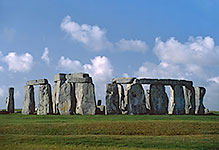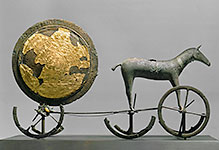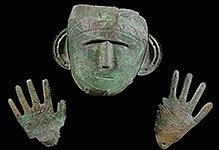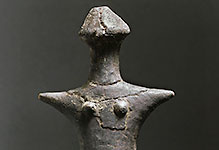
Prehistory
Palaeolithic, Neolithic, Bronze Age and Iron Age.

#03030418
Fragment of a human clay figure (pelvis). Early Middle-Neolithic; from the circ...

#03030419
Fragment of a human clay figure. Early Middle-Neolithic; from the circular ditc...

#03030420
Female idol (upper part of the body). Middle-Neolithic; from Stallegg, Lower Aus...

#03030421
Fragment of a female clay figurine. The surface bears traces of red-white paint....

#03030422
Venus of Eggendorf - female idol. Early Middle-Neolithic; from Eggendorf am Wald...

#03030423
Fragment of a human clay figure. Early Middle-Neolithic; from the circular ditc...

#03030424
Female terracotta figurine coming from a circular ditch in Maizy (Aisne, France)...

#03030425
Bronze fibula from the necropolis of Orainville (Aisne, France). 3rd century BCE...

#03050315
"Violin" figure, Cycladic from the island of Amorgos in the Aegean, around 2.800...

#03050316
Marble figurine of a woman, Cycladic, ca. 2700-2400 BCE. A few male figures and...

#03050326
Terracotta model of people at a basin, Cyprus, Middle Bronze Age, 2000-1600 MCE.

#03050443
Decorated bronze mirror, Iron Age, 50 BC-50 AD. The pattern on the back can be i...




